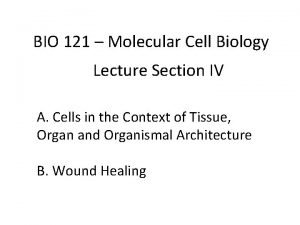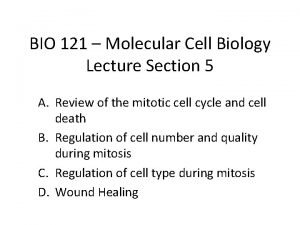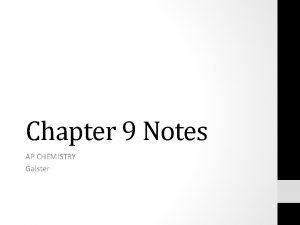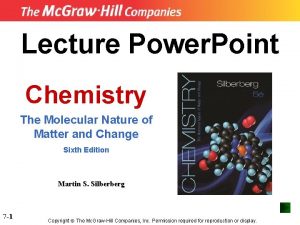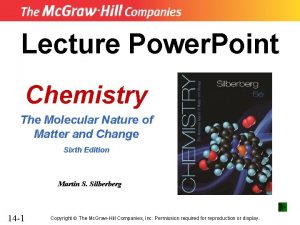Lecture Power Point Chemistry The Molecular Nature of


































![Figure 23. 13 Hybrid orbitals and bonding in the octahedral [Cr(NH 3)6]3+ ion. 23 Figure 23. 13 Hybrid orbitals and bonding in the octahedral [Cr(NH 3)6]3+ ion. 23](https://slidetodoc.com/presentation_image_h/e035039a32d4f4f2f3b0ceca32f85f7e/image-35.jpg)
![Figure 23. 14 Hybrid orbitals and bonding in the square planar [Ni(CN) 4]2 - Figure 23. 14 Hybrid orbitals and bonding in the square planar [Ni(CN) 4]2 -](https://slidetodoc.com/presentation_image_h/e035039a32d4f4f2f3b0ceca32f85f7e/image-36.jpg)
![Figure 23. 15 Hybrid orbitals and bonding in the tetrahedral [Zn(OH)4]2 - ion. 23 Figure 23. 15 Hybrid orbitals and bonding in the tetrahedral [Zn(OH)4]2 - ion. 23](https://slidetodoc.com/presentation_image_h/e035039a32d4f4f2f3b0ceca32f85f7e/image-37.jpg)





![Figure 23. 20 23 -43 The color of [Ti(H 2 O)6]3+. Figure 23. 20 23 -43 The color of [Ti(H 2 O)6]3+.](https://slidetodoc.com/presentation_image_h/e035039a32d4f4f2f3b0ceca32f85f7e/image-43.jpg)











- Slides: 54

Lecture Power. Point Chemistry The Molecular Nature of Matter and Change Fifth Edition Martin S. Silberberg 23 -1 Copyright The Mc. Graw-Hill Companies, Inc. Permission required for reproduction or display.

Chapter 23 The Transition Elements and Their Coordination Compounds 23 -2

The Transition Elements and Their Coordination Compounds 23. 1 Properties of the Transition Elements 23. 2 The Inner Transition Elements 23. 3 Highlights of Selected Transition Metals 23. 4 Coordination Compounds 23. 5 Theoretical Basis for the Bonding and Properties of Complexes 23 -3

Figure 23. 1 23 -4 The transition elements (d block) and inner transition elements (f block) in the periodic table.

Figure 23. 2 23 -5 The Period 4 transition metals.

23 -6

Sample Problem 23. 1 PROBLEM: Writing Electron Configurations of Transition Metal Atoms and Ions Write condensed electron configurations for the following: (a) Zr; (b) V 3+; (c) Mo 3+. (Assume that elements in higher periods behave like those in Period 4. ) PLAN: The general configuration is [noble gas] ns 2(n - 1)dx. Recall that in ions the ns electrons are lost first. SOLUTION: (a) Zr is the second element in the 4 d series: [Kr]5 s 24 d 2. (b) V is the third element in the 3 d series: [Ar]4 s 23 d 3. In forming V 3+, three electrons are lost (two 4 s and one 3 d), so V 3+ is a d 2 ion: [Ar]3 d 2. (c) Mo lies below Cr in Group 6 B(6), so we expect the same exception configuration as for Cr. Thus, Mo is [Kr]5 s 14 d 5. In forming the ion, Mo 3+ loses the one 5 s and two of the 4 d electrons to become a 4 d 3 ion: [Kr]4 d 3. 23 -7

Figure 23. 3 23 -8 Horizontal trends in key atomic properties of the Period 4 elements.

Figure 23. 4 Vertical trends in key properties within the transition elements. 23 -9

Figure 23. 5 Aqueous oxoanions of transition elements. One of the most characteristic chemical properties of these elements is the occurrence of multiple oxidation states. Mn 2+ Mn. O 42− Mn. O 4− VO 43− 23 -10 Cr 2 O 72−

23 -11

23 -12

Figure 23. 6 Colors of representative compounds of the Period 4 transition metals. sodium chromate Titanium(IV) oxide scandium oxide vanadyl sulfate dihydrate 23 -13 nickel(II) nitrate hexahydrate potassium ferricyanide manganese(II) chloride tetrahydrate cobalt(II) chloride hexahydrate zinc sulfate heptahydrate copper(II) sulfate pentahydrate

23 -14

Sample Problem 23. 2 PROBLEM: PLAN: Finding the Number of Unpaired Electrons The alloy Sm. Co 5 forms a permanent magnet because both samarium and cobalt have unpaired electrons. How many unpaired electrons are in the Sm atom (Z = 62)? Write the condensed configuration of Sm and, using Hund’s rule and the aufbau principle, place electrons into a partial orbital diagram. SOLUTION: Sm is the eighth element after Xe. Two electrons go into the 6 s sublevel and the remaining six electrons into the 4 f (which fills before the 5 d). Sm is [Xe]6 s 24 f 6 6 s 4 f There are 6 unpaired e− in Sm. 23 -15 5 d

Figure 23. 7 23 -16 The bright colors of chromium (VI) compounds.

23 -17

Figure 23. 8 23 -18 Steps in producing a black-and-white negative.

Figure 23. 9 Components of a coordination compound. models 23 -19 wedge diagrams chemical formulas

Structures of Complex Ions: Coordination Numbers, Geometries, and Ligands • Coordination number - the number of ligand atoms that are bonded directly to the central metal ion. The coordination number is specific for a given metal ion in a particular oxidation state and compound. • Geometry - the geometry (shape) of a complex ion depends on the coordination number and nature of the metal ion. • Donor atoms per ligand - molecules and/or anions with one or more donor atoms that each donate a lone pair of electrons to the metal ion to form a covalent bond. 23 -20

23 -21

23 -22

23 -23

Formulas of Coordination Compounds Rules for writing formulas: 1. The cation is written before the anion. 2. The charge of the cation(s) is balanced by the charge of the anion(s). 3. In the complex ion, neutral ligands are written before anionic ligands, and the formula for the whole ion is placed in brackets. 23 -24

Names of Coordination Compounds Rules for naming complexes: 1. The cation is named before the anion. 2. Within the complex ion, the ligands are named, in alphabetical order, before the metal ion. 3. Neutral ligands generally have the molecule name, but there a few exceptions. Anionic ligands drop the -ide and add -o after the root name. 4. A numerical prefix indicates the number of ligands of a particular type. 5. The oxidation state of the central metal ion is given by a Roman numeral (in parentheses) only if the metal ion can have more than one state, as in the compound named in rule 1. 6. If the complex ion is an anion we drop the ending of the metal name and add -ate. 23 -25

Sample Problem 23. 3 PROBLEM: Writing Names and Formulas of Coordination Compounds (a) What is the systematic name of Na 3[Al. F 6]? (b) What is the systematic name of [Co(en)2 Cl 2]NO 3? (c) What is the formula of tetraaminebromochloroplatinum(IV) chloride? (d) What is the formula of hexaaminecobalt(III) tetrachloroferrate(III)? PLAN: Use the rules presented - SOLUTION: Formulas and Names. (a) The complex ion is [Al. F 6]3 -. Six (hexa-) fluorines (fluoro-) are the ligands - hexafluoro Aluminum is the central metal atom - aluminate Aluminum has only the +3 ion so we don’t need Roman numerals. sodium hexafluoroaluminate 23 -26

Sample Problem 23. 3 Writing Names and Formulas of Coordination Compounds (b) There are two ligands, chlorine and ethylenediamine dichloro, bis(ethylenediamine) The complex ion is the cation and we have to use Roman numerals for the cobalt oxidation state since it has more than one - (III) The anion, nitrate, is named last. dichlorobis(ethylenediamine)cobalt(III) nitrate (c) 4 NH 3 Br- Cl- Pt 4+ Cl- tetraamminebromochloroplatinum(IV) chloride [Pt(NH 3)4 Br. Cl]Cl 2 (d) 6 NH 3 Co 3+ 4 Cl- Fe 3+ hexaamminecobalt(III) tetrachloro-ferrate(III) [Co(NH 3)6][Cl 4 Fe]3 23 -27

23 -28

Figure 23. 10 Important types of isomerism in coordination compounds. ISOMERS Same chemical formula, but different properties Constitutional (structural) isomers Stereoisomers Atoms connected differently Different spatial arrangement Coordination isomers Linkage isomers Ligand counter-ion exchange Different donor atom 23 -29 Geometric (cistrans) isomers (diastereomers) Different arrangement around metal ion Optical isomers (enantiomers) Nonsuperimposable mirror images

Linkage isomers 23 -30

Figure 23. 11 23 -31 Geometric (cis-trans) isomerism.

Figure 23. 12 Optical isomerism in an octahedral complex ion. 23 -32

Sample Problem 23. 4 PROBLEM: PLAN: Determining the Type of Stereoisomerism Draw all stereoisomers for each of the following and state the type of isomerism: (a) [Pt(NH 3)2 Br 2] (b) [Cr(en)3]3+ (en = H 2 NCH 2 NH 2) Determine the geometry around each metal ion and the nature of the ligands. Place the ligands in as many different positions as possible. Look for cis-trans and optical isomers. SOLUTION: (a) Pt(II) forms a square planar complex and there are two pairs of monodentate ligands - NH 3 and Br. trans 23 -33 cis These are geometric isomers; they are not optical isomers since they are superimposable on their mirror images.

Sample Problem 23. 4 Determining the Type of Stereoisomerism (b) Ethylenediamine is a bidentate ligand. Cr 3+ is hexacoordinated and will form an octahedral geometry. Since all of the ligands are identical, there will be no geometric isomerism possible. The mirror images are nonsuperimposable and are therefore optical isomers. 23 -34
![Figure 23 13 Hybrid orbitals and bonding in the octahedral CrNH 363 ion 23 Figure 23. 13 Hybrid orbitals and bonding in the octahedral [Cr(NH 3)6]3+ ion. 23](https://slidetodoc.com/presentation_image_h/e035039a32d4f4f2f3b0ceca32f85f7e/image-35.jpg)
Figure 23. 13 Hybrid orbitals and bonding in the octahedral [Cr(NH 3)6]3+ ion. 23 -35
![Figure 23 14 Hybrid orbitals and bonding in the square planar NiCN 42 Figure 23. 14 Hybrid orbitals and bonding in the square planar [Ni(CN) 4]2 -](https://slidetodoc.com/presentation_image_h/e035039a32d4f4f2f3b0ceca32f85f7e/image-36.jpg)
Figure 23. 14 Hybrid orbitals and bonding in the square planar [Ni(CN) 4]2 - ion. 23 -36
![Figure 23 15 Hybrid orbitals and bonding in the tetrahedral ZnOH42 ion 23 Figure 23. 15 Hybrid orbitals and bonding in the tetrahedral [Zn(OH)4]2 - ion. 23](https://slidetodoc.com/presentation_image_h/e035039a32d4f4f2f3b0ceca32f85f7e/image-37.jpg)
Figure 23. 15 Hybrid orbitals and bonding in the tetrahedral [Zn(OH)4]2 - ion. 23 -37

Figure 23. 16 23 -38 An artist’s wheel.

23 -39

Figure 23. 17 23 -40 The five d-orbitals in an octahedral field of ligands.

Figure 23. 18 Splitting of d-orbital energies by an octahedral field of ligands. D is the splitting energy 23 -41

Figure 23. 19 23 -42 The effect of the ligand on splitting energy.
![Figure 23 20 23 43 The color of TiH 2 O63 Figure 23. 20 23 -43 The color of [Ti(H 2 O)6]3+.](https://slidetodoc.com/presentation_image_h/e035039a32d4f4f2f3b0ceca32f85f7e/image-43.jpg)
Figure 23. 20 23 -43 The color of [Ti(H 2 O)6]3+.

Figure 23. 21 Effects of the metal oxidation state and of ligand identity on color. [V(H 2 O)6]3+ [V(H 2 O)6]2+ [Cr(NH 3)6]3+ 23 -44 [Cr(NH 3)5 Cl ]2+

Figure 23. 22 The spectrochemical series. • For a given ligand, the color depends on the oxidation state of the metal ion. • For a given metal ion, the color depends on the ligand. I- < Cl- < F- < OH- < H 2 O < SCN- < NH 3 < en < NO 2 - < CN- < CO WEAKER FIELD 23 -45 STRONGER FIELD SMALLER D LARGER D LONGER SHORTER

Sample Problem 23. 5 PROBLEM: Ranking Crystal Field Splitting Energies for Complex Ions of a Given Metal Rank the ions [Ti(H 2 O)6]3+, [Ti(NH 3)6]3+, and [Ti(CN)6]3 - in terms of the relative value of D and of the energy of visible light absorbed. PLAN: The oxidation state of Ti is 3+ in all of the complexes so we are looking at the crystal field strength of the ligands. The stronger the ligand the greater the splitting and the higher the energy of the light absorbed. SOLUTION: The field strength according to is CN- > NH 3 > H 2 O. So the relative values of D and energy of light absorbed will be [Ti(CN)6]3 - > [Ti(NH 3)6]3+ > [Ti(H 2 O)6]3+ 23 -46

Figure 23. 23 23 -47 High-spin and low-spin complex ions of Mn 2+.

Figure 23. 24 Orbital occupancy for high-spin and low-spin complexes of d 4 through d 7 metal ions. high spin: weak-field ligand 23 -48 low spin: strong-field ligand high spin: weak-field ligand low spin: strong-field ligand

Sample Problem 23. 6 PROBLEM: PLAN: Identifying Complex Ions as High Spin or Low Spin Iron (II) forms an essential complex in hemoglobin. For each of the two octahedral complex ions [Fe(H 2 O)6]2+ and [Fe(CN)6]4 -, draw an orbital splitting diagram, predict the number of unpaired electrons, and identify the ion as low or high spin. The electron configuration of Fe 2+ gives us information that the iron has 6 d electrons. The two ligands have field strengths shown in Figure 23. 22. potential energy Draw the orbital box diagrams, splitting the d orbitals into eg and t 2 g. Add the electrons noting that a weak-field ligand gives the maximum number of unpaired electrons and a high-spin complex and vice-versa. [Fe(CN)6]42+ [Fe(H 2 O)6] SOLUTION: 4 unpaired e-eg (high spin) eg no unpaired e-(low spin) t 2 g 23 -49

Figure 23. 25 Splitting of d-orbital energies by a tetrahedral field of ligands. tetrahedral 23 -50

Figure 23. 26 23 -51 Splitting of d-orbital energies by a square planar field of ligands.

Figure B 23. 1 23 -52 Hemoglobin and the octahedral complex in heme.

23 -53

Figure B 23. 2 23 -54 The tetrahedral Zn 2+ complex in carbonic anhydrase.
 01:640:244 lecture notes - lecture 15: plat, idah, farad
01:640:244 lecture notes - lecture 15: plat, idah, farad Molecular biology lectures
Molecular biology lectures Dense regular ct
Dense regular ct Fibroblast
Fibroblast Giant molecular structure vs simple molecular structure
Giant molecular structure vs simple molecular structure Giant molecular structure vs simple molecular structure
Giant molecular structure vs simple molecular structure Zinc oxide + nitric acid → zinc nitrate + water
Zinc oxide + nitric acid → zinc nitrate + water The real lesson 21
The real lesson 21 Powerbi in powerpoint
Powerbi in powerpoint Point point power
Point point power Advanced inorganic chemistry lecture notes
Advanced inorganic chemistry lecture notes Atmospheric chemistry lecture notes
Atmospheric chemistry lecture notes Democritus atomic model diagram
Democritus atomic model diagram Ap chemistry molecular geometry
Ap chemistry molecular geometry Power system dynamics and stability lecture notes
Power system dynamics and stability lecture notes Zline 667-36
Zline 667-36 Power semiconductor devices lecture notes
Power semiconductor devices lecture notes Switch mode power supply lecture notes
Switch mode power supply lecture notes Power system dynamics and stability lecture notes
Power system dynamics and stability lecture notes Customs in things fall apart
Customs in things fall apart Nature and nature's laws lay hid in night
Nature and nature's laws lay hid in night Determinace lidské psychiky
Determinace lidské psychiky Chapter 4 basic food chemistry the nature of matter
Chapter 4 basic food chemistry the nature of matter Chapter 4 basic food chemistry the nature of matter
Chapter 4 basic food chemistry the nature of matter Basic food chemistry the nature of matter
Basic food chemistry the nature of matter Ib chemistry organic chemistry
Ib chemistry organic chemistry Inorganic chemistry vs organic chemistry
Inorganic chemistry vs organic chemistry Hát kết hợp bộ gõ cơ thể
Hát kết hợp bộ gõ cơ thể Bổ thể
Bổ thể Tỉ lệ cơ thể trẻ em
Tỉ lệ cơ thể trẻ em Chó sói
Chó sói Tư thế worm breton là gì
Tư thế worm breton là gì Hát lên người ơi
Hát lên người ơi Các môn thể thao bắt đầu bằng từ đua
Các môn thể thao bắt đầu bằng từ đua Thế nào là hệ số cao nhất
Thế nào là hệ số cao nhất Các châu lục và đại dương trên thế giới
Các châu lục và đại dương trên thế giới Công của trọng lực
Công của trọng lực Trời xanh đây là của chúng ta thể thơ
Trời xanh đây là của chúng ta thể thơ Cách giải mật thư tọa độ
Cách giải mật thư tọa độ Phép trừ bù
Phép trừ bù độ dài liên kết
độ dài liên kết Các châu lục và đại dương trên thế giới
Các châu lục và đại dương trên thế giới Thể thơ truyền thống
Thể thơ truyền thống Quá trình desamine hóa có thể tạo ra
Quá trình desamine hóa có thể tạo ra Một số thể thơ truyền thống
Một số thể thơ truyền thống Bàn tay mà dây bẩn
Bàn tay mà dây bẩn Vẽ hình chiếu vuông góc của vật thể sau
Vẽ hình chiếu vuông góc của vật thể sau Thế nào là sự mỏi cơ
Thế nào là sự mỏi cơ đặc điểm cơ thể của người tối cổ
đặc điểm cơ thể của người tối cổ Ví dụ về giọng cùng tên
Ví dụ về giọng cùng tên Vẽ hình chiếu đứng bằng cạnh của vật thể
Vẽ hình chiếu đứng bằng cạnh của vật thể Phối cảnh
Phối cảnh Thẻ vin
Thẻ vin đại từ thay thế
đại từ thay thế


